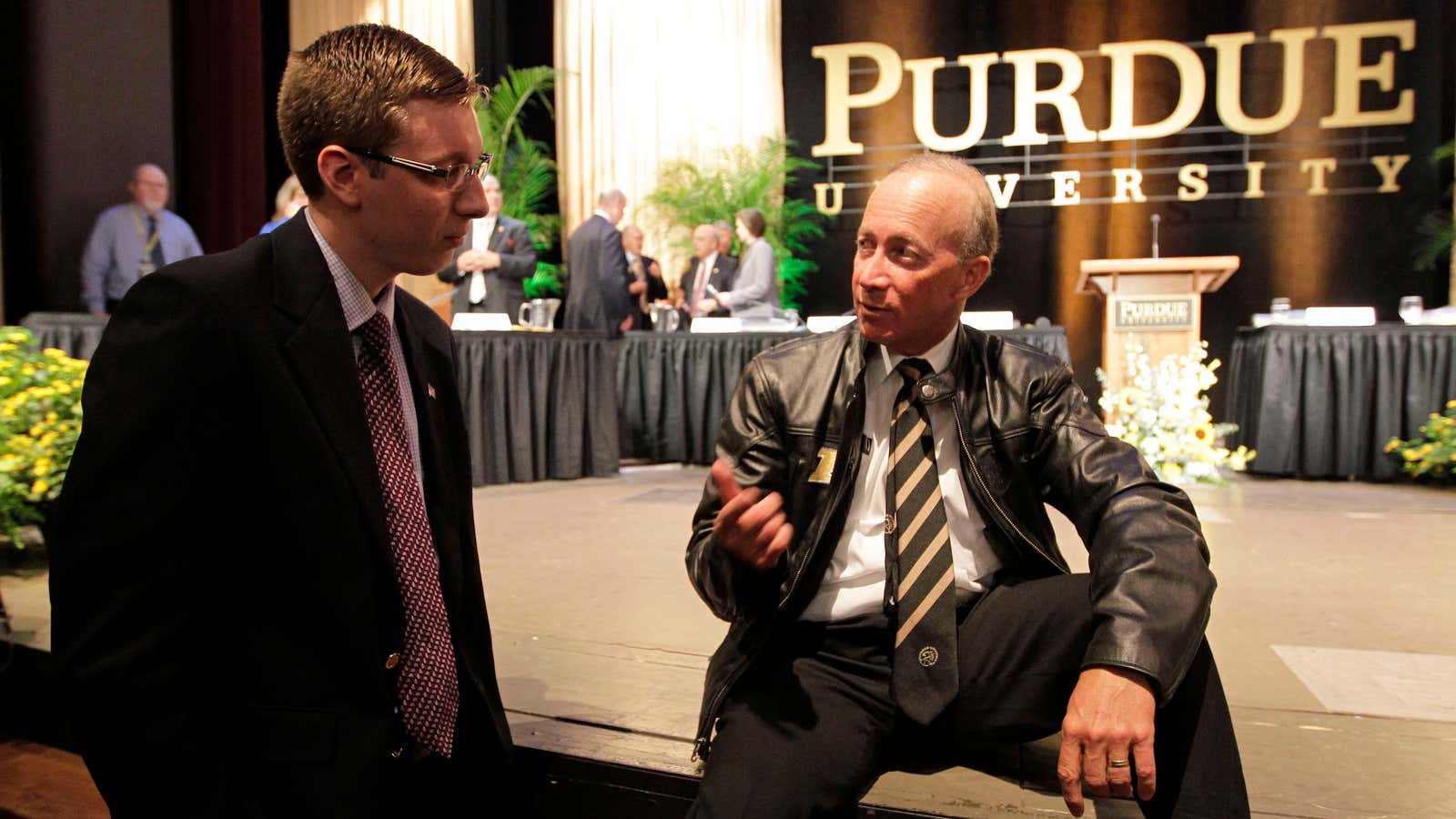For-profit universities in the US have a record of aggressive marketing practices, poor completion rates, and producing graduates with uncertain job prospects and high levels of debt.
So why would Purdue University, a state university in Indiana founded in 1869, buy Kaplan University, a for-profit institution with a record of federal investigations and lawsuits from former students?
Purdue is eager to offer online education, and acquiring Kaplan was cheaper that building a new system form scratch, Purdue president Mitch Daniels said in a statement. The school doesn’t have to pay anything upfront, and “will enter into a long-term transition and support agreement, with a buy-out option after year six,” according to a FAQ page.
Kaplan—until now owned by Graham Holdings, the former owners of the Washington Post—will be renamed and the new institution will operate as a new unit of Purdue, but without taxpayer subsidies. Indiana residents will get a discount on tuition.
The deal is a product of the shifting forces remaking higher education. For-profit universities were the first to see the potential of online education, with some growing to massive size—the University of Phoenix’s enrollment reached 460,000—but they were undone by placing profits and growth over student outcomes
Their myriad problems attracted scrutiny from state and federal authorities. New regulations have forced them to curb their worst behavior, and enrollments and stock prices plummeted. Some colleges, like Corinthian, have gone out of business, stranding their students. Others, like Trump University, have settled lawsuits with students claiming their degrees are worthless.
Into the breach stepped traditional universities, which offered students a more credible diploma. Southern New Hampshire University, for example, now has more than 75,000 online students—with just 3,000 on campus.
Public universities have been forced to become more entrepreneurial as states have dramatically cut funding. It’s no surprise that Daniels, the former Republican governor of Indiana who slashed the state’s higher-ed budget, would be pushing Purdue to find new sources of revenue.
Still, it’s an unexpected turn in American higher education, with a market-driven disruptor swallowed by the stodgy old incumbents. But it may be that the for-profit executives just misread the market signals: Students, it seems, didn’t just want convenient education; they also wanted it to be provided by a reputable institution.
Update: In an email, a Purdue spokesman noted that while as governor of Indiana, Daniels did cut higher education funding,”it was a one-time reduction followed by increases for higher education, and throughout the recession Indiana was third in the nation in maintaining spending for higher education.”
